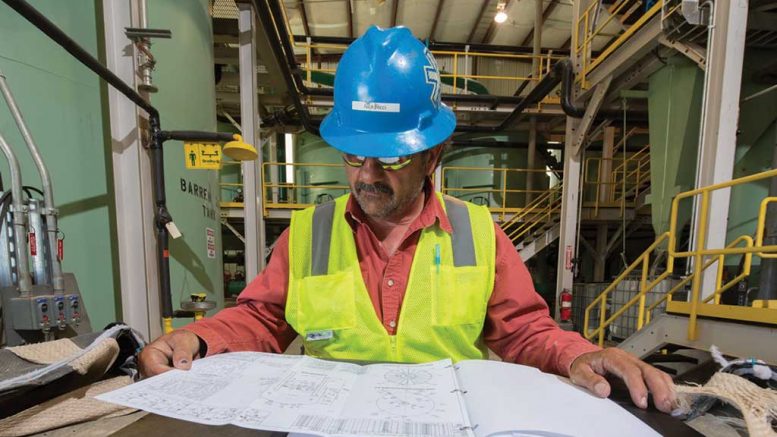VANCOUVER — After one year of infill drilling and number crunching, Pershing Gold (NASDAQ: PGLC) has produced a prefeasibility study (PFS) for its Relief Canyon open-pit, heap-leach gold project, 150 km northeast of Reno, Nevada. The study shows an after-tax net present value of US$126 million, assuming a 5% discount rate, and an 85% after-tax internal rate of return.
Pershing’s president and CEO Stephen Alfewrs touts Relief Canyon as a low-cost, low-capital expense project. With initial permits already in hand, he expects Pershing could reach a production decision later this year.
“We’re pleased with the results,” Alfers tells The Northern Miner during a phone interview. “To get the most shareholder value out of a project like this, we tried to get the highest mine rates at optimal capital costs, and that’s what we ended up with.”
Pershing would use a contract miner to produce 93,900 oz. gold per year over a 5.6-year mine life at cash costs of US$770 per oz. gold.
Alfers says that contract mining has become the more attractive option for the company.
“The economic model discloses terrific mining costs under contract mining, but it also built in the option for us to acquire equipment and pursue self-mining,” he says.

Pershing Gold’s Relief Canyon property in Nevada comprises three historic open-pit gold mines and a fully built heap leach processing facility. Credit: Pershing Gold.
Pershing acquired Relief Canyon — which is comprised of three historic pits and a fully built heap-leach processing facility — for US$20 million in 2011.
The study estimates that bringing Relief Canyon back into production could cost Pershing US$23.6 million in capital expenses, compared to the US$12.2 million proposed in an earlier preliminary economic assessment.
The increase in capex reflects a need to start with three leach pads, as opposed to one, prompted by the company’s decision to crush and agglomerate mineralized material as opposed to having a run-of-mine component.
“The capital costs are modest almost any way you cut it, they’re the kind of costs that Pershing can take on its balance sheets,” Alfers says. “It presents us with options of how to fulfill part or all of our financing needs. We could go in the direction of securing a credit facility, or maybe we will consider commodity-based lending, forward-sale agreements or offtakes.”
In preparation for the study, Pershing spent the past year upgrading resources at Relief Canyon.
Alfers says the drilling resulted in a “near-perfect” conversion of the project’s resources into reserves, which now stand at 27.7 million proven and probable tonnes at 0.72 gram gold per tonne.
“We saw 80% of our resources converted into reserves in this update. That level of conversion speaks to the quality of our geological model and to the resource itself,” he says.

One of the three historic open pits at Pershing Gold’s Relief Canyon gold project in Nevada. Credit: Pershing Gold.
“We’ve gained a strong understanding of the structures that control mineralization on the property, and they’ve become predictable to target as we step out.”
Some of the drill holes hit mineralization outside the proposed pit walls, which puts weight behind Pershing’s expectations that Relief canyon could become a “long-life operation.”
Drill results from the first-phase drill program to extend the western resource boundary intercepted 7.3 metres of 1.83 grams gold, including 1.5 metres of 13.9 grams gold.
The hole is 168 metres from a previous drill hole that intersected eight mineralized zones totalling 51 metres long and averaging 1.6 grams gold.

Equipment and facilities at Pershing Gold’s Relief Canyon project. Credit: Pershing Gold.
“We focused on wide step-outs on areas that are still shallow enough to come into the pit,” he says. “Later this year we’ll start infill drilling in these areas and add ounces to the resource.”
Cantor Fitzgerald analyst Rob Chang has kept the firm’s “buy” recommendation on Pershing shares, and raised his target price a nickel to US$4.65 per share.
Shares of Pershing have traded in a 52-week range of US$2.60 to US$5.02, and closed at US$2.75 at press time. The company has 28.4 million shares outstanding for a US$78-million market capitalization.


Be the first to comment on "Pershing re-envisages Relief Canyon as low cost mine"